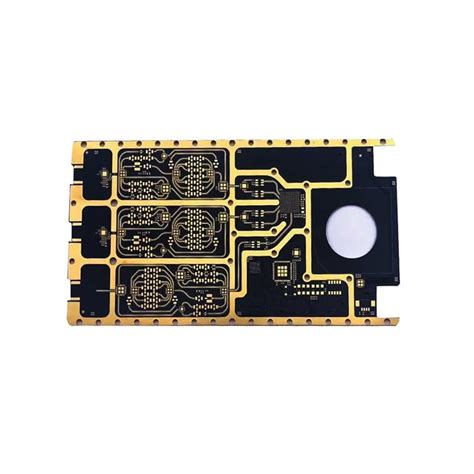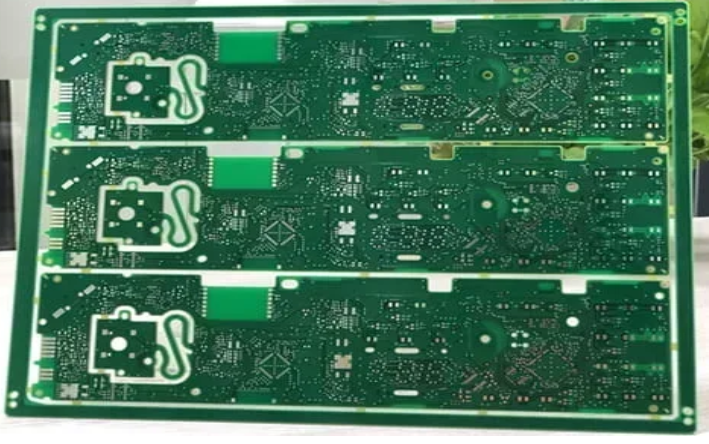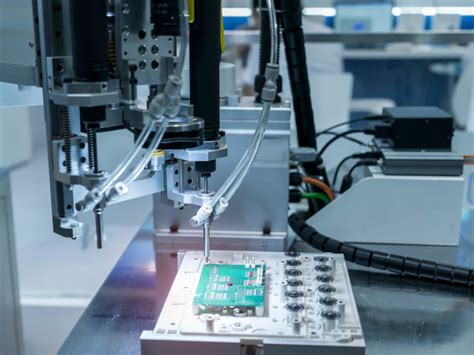Top Heavy Copper PCB Manufacturers for High Power Applications

Key Takeaways
When exploring heavy copper PCBs, it is essential to understand their unique manufacturing processes and benefits. These specialized PCBs are designed to handle higher currents and are crucial for high power applications. With your focus on durability and efficiency, partnering with the right pcb manufacturing companies can significantly impact your product’s performance. The pcb manufacturing cost can vary based on the complexity and specifications required, so it is wise to evaluate various manufacturers before making a decision.
Key features to look for include the thickness of copper layers, thermal performance, and mechanical integrity. By assessing the capabilities of different pcb manufacturing businesses, you can align your project’s needs with technological innovations that enhance conductivity and reliability. As technology progresses, you’ll want to keep an eye on trends that affect heavy copper PCB production, such as advancements in materials and processes that can reduce lead times while maintaining high quality.
| Feature | Importance |
|---|---|
| Copper Thickness | Determines current capacity |
| Thermal Management | Essential for heat dissipation |
| Mechanical Strength | Ensures durability |
In this evolving landscape of electronics, familiarity with these factors will empower you to make informed decisions for your high power applications. Whether you’re scaling production or adjusting design parameters, understanding these takeaways will guide you toward successful outcomes in your projects. If you’re looking for a reputable manufacturer with expertise in heavy copper PCBs, consider exploring more about Andwin PCB for their offerings tailored to meet demanding specifications.

Understanding Heavy Copper PCBs and Their Benefits
Heavy copper PCBs, defined as those with copper weights exceeding 4 ounces per square foot, are engineered to handle high current applications effectively. These specialized PCBs offer significant advantages in terms of durability and thermal management, making them ideal for industries such as power conversion, automotive, and telecommunications. One of the primary benefits you will find is their ability to dissipate heat efficiently, which reduces the risk of component failure in high-power environments. Furthermore, heavy copper PCBs can support larger traces that carry higher currents without compromising signal integrity.
In addition to enhanced thermal performance, the use of heavy copper increases the overall strength and rigidity of the PCB. This feature is particularly important during the assembly process or in environments subjected to mechanical stress. When exploring PCB manufacturing companies, it’s crucial to consider their expertise in heavy copper technologies to ensure they can meet your project’s specific requirements while managing PCB manufacturing costs effectively.
You might also be interested in understanding how these manufacturers utilize innovative techniques in PCB manufacturing business practices to enhance production speed and quality. With advancements such as laser etching and sophisticated plating methods, these companies are positioned to deliver high-performance PCBs that consistently meet rigorous industry standards.
“When selecting a manufacturer for your heavy copper needs, factor in their capabilities for both design flexibility and production scalability.” By prioritizing these features, you can ensure that you receive a PCB solution that stands up to rigorous operational demands while supporting your unique application needs.

Key Features of High Power PCB Designs
When exploring high power PCB designs, it’s essential to recognize their unique attributes that set them apart from standard PCBs. First and foremost, the use of heavy copper is crucial; these boards typically contain copper thicknesses exceeding 3 oz/ft², allowing for superior current carrying capacity. This characteristic leads to enhanced heat dissipation, minimizing the risk of thermal-related failures in demanding applications. Additionally, these designs often incorporate advanced thermal management solutions, such as thermal vias and copper planes, to further optimize heat distribution across the board.
Moreover, robust mechanical support is integral in high power PCB solutions; as they endure elevated operating conditions, reinforced designs prevent warping and ensure longevity. To achieve this robustness, many modern pcb manufacturing companies leverage innovative materials that offer higher thermal conductivity and improved dielectric properties. Manufacturers also focus on precision in their pcb manufacturing business, ensuring that every layer is meticulously crafted for optimal performance.
Cost-effectiveness remains a significant factor in choosing heavy copper PCBs for your projects. While the pcb manufacturing cost can be higher compared to standard boards due to sophisticated techniques required for producing high-heavy copper alternatives, the long-term benefits—such as increased reliability and reduced maintenance—often justify this investment. In summary, understanding these key features will empower you to make informed decisions when considering heavy copper PCBs for your high power applications.
Innovative Manufacturing Techniques in Heavy Copper PCBs
In the evolving landscape of pcb manufacturing, innovative techniques play a crucial role in enhancing the efficiency and durability of heavy copper PCBs. These techniques not only address the unique requirements of high power applications but also optimize production processes for pcb manufacturing companies. For instance, advancements in laser drilling and etching technologies allow for precision that significantly reduces material waste while ensuring better thermal dissipation in heavy copper PCB designs. Additionally, employing state-of-the-art automated assembly processes minimizes human error and accelerates production times, impacting overall pcb manufacturing cost positively. These innovations help manufacturers cater to industries with stringent performance demands, such as automotive and industrial machinery, setting a benchmark for quality in the pcb manufacturing business. By adopting these modern practices, companies not only enhance their product offerings but also maintain competitive pricing and sustainability, which are essential factors in today’s market.
Case Studies: Successful Applications of Heavy Copper PCBs
Heavy copper PCBs have proven essential in various high-stakes environments where reliability and performance are non-negotiable. For instance, in the aerospace sector, heavy copper PCBs are utilized to handle the extreme currents required for critical avionic systems. One notable example involves a leading PCB manufacturing company that specialized in airframe applications. By leveraging innovative manufacturing techniques, they produced a heavy copper PCB that not only reduced the overall weight of the system but also enhanced its thermal management capabilities, crucial for withstandomg high operational temperatures.
In the automotive industry, another case showcases how pcb manufacturing firms have successfully integrated heavy copper solutions into electric vehicle charging stations. These PCBs are designed to efficiently handle increased load currents, thereby minimizing risks associated with overheating and electrical failures. The result is not only improved safety but also greater overall efficiency in power distribution.
These case studies reflect the commitment of reputable pcb manufacturing companies to develop durable solutions that cater to high power demands. When evaluating pcb manufacturing cost, it’s important to remember that investment in high-quality heavy copper solutions can lead to long-term savings by reducing maintenance and failure rates. As you consider your options for PCB solutions, keep these successful applications in mind as they underscore the performance and reliability that heavy copper technology can deliver in today’s demanding electronic landscape.
Choosing the Right Manufacturer for Your Heavy Copper PCB Needs
Selecting a suitable manufacturer for your heavy copper PCBs is crucial to ensure that your final product meets both performance and quality standards. Start by evaluating the pcb manufacturing companies that specialize in high power applications. Look for those with a proven track record in pcb manufacturing, as their experience can provide insights into their capabilities and reliability. Consider aspects such as their ability to handle pcb manufacturing cost effectively while maintaining quality. The right manufacturer should employ advanced techniques and technology, enhancing the durability and efficiency of the PCBs they produce. Additionally, you might want to analyze case studies or client testimonials to gauge their reputation in the industry. This diligence will aid you in finding a partner that not only understands your specific needs but also aligns with your goals for your pcb manufacturing business. Ultimately, making an informed choice can significantly impact the performance of your high power applications.

Future Trends in Heavy Copper PCB Technology
As the demand for high-powered electronic devices skyrockets, understanding the future trends in heavy copper PCB technology becomes essential for your innovation strategy. One significant trend is the adoption of advanced pcb manufacturing techniques that allow for enhanced thermal management and improved electrical conductivity. This trend is driven by the ongoing necessity for devices to perform efficiently within compact spaces without overheating. Furthermore, advancements in pcb manufacturing companies are focusing on eco-friendly processes while maintaining high standards of durability and reliability. Another area of progressing interest is the integration of smart technology within heavy copper PCBs, enabling predictive maintenance and real-time performance monitoring, which helps reduce overall pcb manufacturing costs. You can also expect more flexibility in design through innovative materials that facilitate customized solutions for complex applications. As a result, your choice in partnering with the right pcb manufacturing business will play a crucial role in leveraging these trends to meet future challenges while maintaining competitiveness in the electronics market. This evolving landscape promises not only to enhance product performance but also supports sustainability initiatives across various industries.

Conclusion
In summary, the landscape of heavy copper PCB manufacturers is characterized by a select group of companies that excel in pcb manufacturing for high power applications. When evaluating your options, it’s crucial to consider the pcb manufacturing cost and understand the expertise and capabilities of these manufacturers. They are not just meeting current demands; they are also innovating to ensure longevity and efficiency in their products. By collaborating with reputable pcb manufacturing companies, you can ensure that your high power electronic needs are met through advanced designs and reliable materials. The right choice in a pcb manufacturing business can set your project up for success, leveraging the strengths of heavy copper technology. As you move forward, keep an eye on emerging trends, as these manufacturers continuously seek to elevate their offerings with cutting-edge solutions tailored for the evolving electronics market.
FAQs
What are heavy copper PCBs and why are they used in high power applications?
Heavy copper PCBs are printed circuit boards with copper weights of 4 oz/ft² (140 g/m²) or more. They are specifically designed for applications requiring high current transmission, such as power supplies, automotive systems, and telecommunications equipment. Their robust construction provides enhanced durability and thermal efficiency.
How do I choose the right manufacturer for heavy copper PCB fabrication?
When selecting a manufacturer, consider their expertise in pcb manufacturing, the technology they use, their track record with similar projects, and their ability to meet your specific requirements. Additionally, compare prices but remember that the pcb manufacturing cost can vary widely based on complexity and volume.
What is the typical lead time for heavy copper PCB production?
Lead times can vary depending on the manufacturer’s workload and process complexity. Generally, expect anywhere from a few weeks to several months. For urgent requirements, discussing expedited services with your chosen pcb manufacturing companies may be beneficial.
What factors influence the cost of heavy copper PCBs?
Factors such as design complexity, board size, thickness of copper layers, and surface finish options all affect pcb manufacturing cost. It’s crucial to balance quality and price to ensure durability and performance in your final product.
Are there specific quality standards that heavy copper PCB manufacturers must follow?
Yes, manufacturers should comply with industry standards such as IPC-A-600 for printed boards and IPC-6012 for performance specifications. Adhering to these standards ensures that you’re working with reputable pcb manufacturing businesses, capable of producing reliable products.







